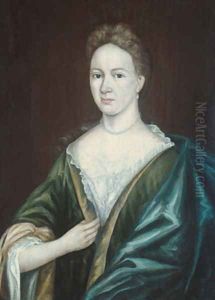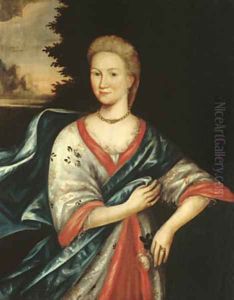Gerrit Duyckinck Paintings
Gerrit Duyckinck was a colonial American painter, born around 1640 in the Dutch Republic. He was part of the large Duyckinck family, which was prominent in New York during the 17th and 18th centuries. Gerrit emigrated to the Dutch colony of New Netherland, which later became New York after the English took control in 1664.
Duyckinck's life and work were deeply intertwined with the development of the arts in colonial America. As an artist, he was known for his portraiture, which was in demand among the wealthy and influential colonial families. His style was typical of the period, with emphasis on detailed representation of clothing and facial features, which was a carryover from European portrait painting traditions.
Not much is known about Duyckinck's training or early work. It is believed he may have been self-taught or apprenticed to a painter in the Netherlands before emigrating. His career in America flourished in the latter half of the 17th century. In 1679, he was commissioned by the Dutch Reformed Church to create a series of portraits, which indicates that he was already a respected artist by that time.
Gerrit Duyckinck's legacy extends beyond his own works, as he became the patriarch of a family that continued to be involved in the arts for generations. His descendants included publishers and writers who were significant in the cultural life of New York City.
Duyckinck died in 1703. His works are considered important in the study of early American art, especially in understanding the cultural and social aspirations of the colonial elite. His portraits are valuable records of the individuals who shaped the early history of the United States. Unfortunately, due to the limited number of surviving pieces attributed to him, much of his work remains obscure, and he is often overshadowed by other colonial artists.

